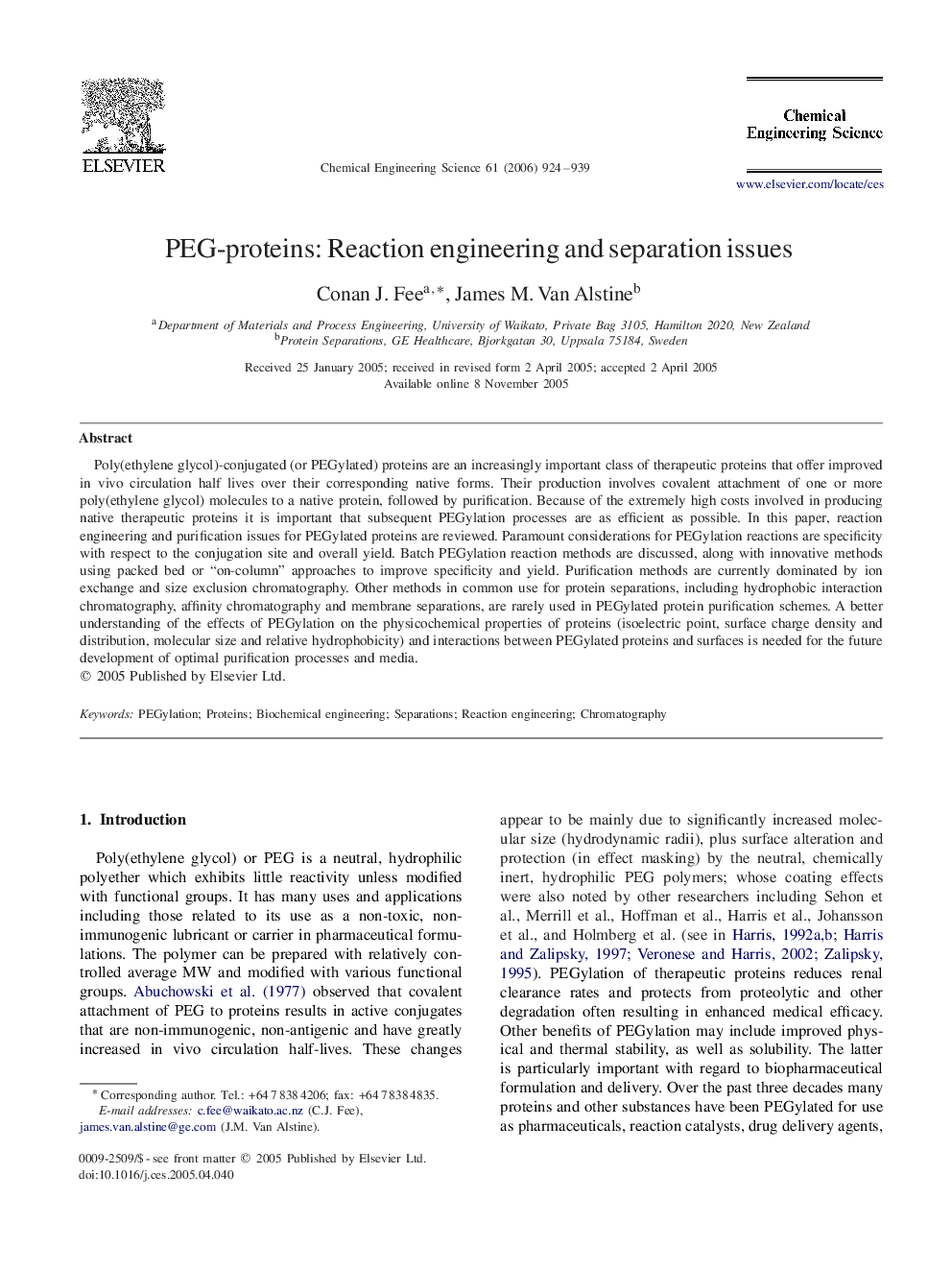| کد مقاله | کد نشریه | سال انتشار | مقاله انگلیسی | نسخه تمام متن |
|---|---|---|---|---|
| 159947 | 457053 | 2006 | 16 صفحه PDF | دانلود رایگان |

Poly(ethylene glycol)-conjugated (or PEGylated) proteins are an increasingly important class of therapeutic proteins that offer improved in vivo circulation half lives over their corresponding native forms. Their production involves covalent attachment of one or more poly(ethylene glycol) molecules to a native protein, followed by purification. Because of the extremely high costs involved in producing native therapeutic proteins it is important that subsequent PEGylation processes are as efficient as possible. In this paper, reaction engineering and purification issues for PEGylated proteins are reviewed. Paramount considerations for PEGylation reactions are specificity with respect to the conjugation site and overall yield. Batch PEGylation reaction methods are discussed, along with innovative methods using packed bed or “on-column” approaches to improve specificity and yield. Purification methods are currently dominated by ion exchange and size exclusion chromatography. Other methods in common use for protein separations, including hydrophobic interaction chromatography, affinity chromatography and membrane separations, are rarely used in PEGylated protein purification schemes. A better understanding of the effects of PEGylation on the physicochemical properties of proteins (isoelectric point, surface charge density and distribution, molecular size and relative hydrophobicity) and interactions between PEGylated proteins and surfaces is needed for the future development of optimal purification processes and media.
Journal: Chemical Engineering Science - Volume 61, Issue 3, February 2006, Pages 924–939